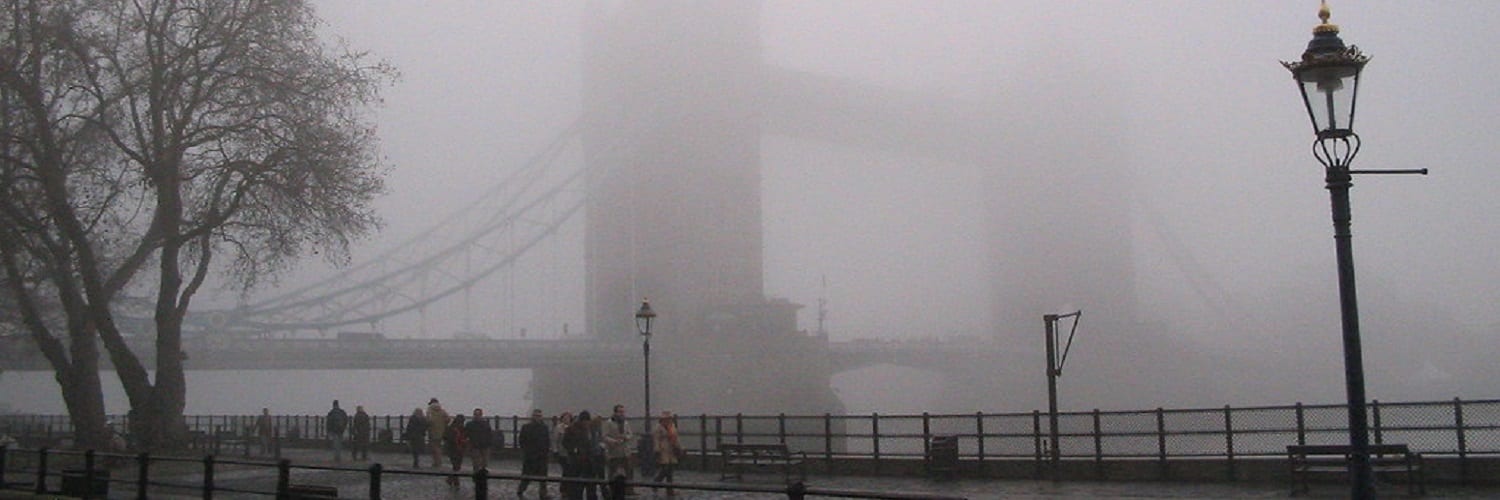Week 2: The Film of "The Lodger"

In week 2 of our book club, we will discuss Alfred Hitchcock’s film adaptation of Marie Belloc Lowndes’ novel "The Lodger." "The Lodger" was the first film Hitchcock directed in London after completing two films in Germany in 1925. It stars Ivor Novello, a matinee idol of his time, and is notable for its expressive use of lighting and shadow, qualities influenced by German films of the period. Changes in several characters from the novel, especially Daisy and the detective, create a more ambiguous moral universe for the film and challenge our assumptions about the lodger’s guilt. In directing his first feature in the U.K., Hitchcock benefited from collaborating with experienced colleagues such as Ivor Montagu and screenwriter Eliot Stannard and we will talk about the influence of London’s thriving film culture on his work.
Preparation
Presented by Susan Ohmer
Watch “The Lodger: A Story of the London Fog” by Alfred Hitchcock. The film is available for free on YouTube.
Alfred Hitchcock: Early Career and Influences
Presented by Susan Ohmer
This video explores Hitchcock’s early career in London and the influence of the city’s film culture on his first English feature “The Lodger: A Story of the London Fog.”
Hitchcock's Early Films
Presented by Susan Ohmer
After the success of “The Lodger,” Hitchcock was regarded as one of Britain’s most promising young directors and he directed a spate of films that are available on DVD or through streaming that might interest you. Eliot Stannard, the screenwriter for “The Lodger,” collaborated on many of these films as well. “The Ring” (1927) follows a boxer and his girlfriend, who is attracted to another man, as they sort out their relationship. “Downhill” (1927) also stars Ivor Novello, who wrote the play on which it was based, as a schoolboy who takes up with bad influences and is expelled. Leaving his family and friends he literally goes “downhill” as he struggles to survive through odd jobs in seamy locales around Europe. Both films include notable special effects sequences; at one point in “Downhill,” the hero becomes delirious and hallucinates in color and kaleidoscopic images.
“Easy Virtue” (1928) was inspired by a play by Noel Coward and includes a courtroom scene that anticipates Hitchcock’s later film in Hollywood, “The Paradine Case” (1947). “Champagne” (1928) features a free-spirited heiress, played by comedian Betty Balfour, whose boyfriend deserts her after it appears that her father has lost all of his money. The film opens as Betty arrives on a cruise ship by seaplane, a nod to Charles Lindbergh’s flight across the Atlantic the year before. It also has some notable special effects shots, such as when the man who is surveilling her for her father watches her through the bottom of a glass of champagne.
In 1928 and 1929, Hitchcock released his first sound film — in fact, Britain’s first sound feature — “Blackmail.” Like “The Lodger,” it features a young woman, also blonde, who inadvertently gets mixed up in a difficult situation that also embroils her boyfriend, a detective, and that creates an ambiguous moral situation for both of them. The film was shot in both sound and silent versions and comparing the two provides an excellent opportunity to see how Hitchcock worked with the aesthetic possibilities of each medium.
Hitchcock and Germany in the 1920s
Presented by Susan Ohmer
The year before Hitchcock began directing in London, he made his first two feature films in Germany. This video will look at German film in the 1920s and how that influenced Hitchcock’s approach to the Lodger.
Guilt and Ambiguity
Presented by Susan Ohmer
This video will highlight some qualities to look for in the film’s characters and narrative structure that change significantly from the novel.
View the Event
Presented by Susan Ohmer
Subscribe to the ThinkND podcast on Apple, Spotify, or Google.
Featured Speakers:
- Susan Ohmer, The William T. and Helen Kuhn Carey Associate Professor of Modern Communication, University of Notre Dame
- Kieron Webb, Head of Conservation, British Film Institute
- Rev. Jim Lies C.S.C., Director for Academic Initiatives & Partnerships, University of Notre Dame, London, England
Additional Resources
Presented by Susan Ohmer
- In July 1940, Hitchcock directed a radio adaptation of “The Lodger” for the CBS program “Suspense.” You can listen to the thirty-minute program for free here.
- The Women Film Pioneers Project at Columbia University has assessed the professional work of Hitchcock’s wife Alma Reville here.
- There are many biographies of Alfred Hitchcock’s life and career and one of the most readable and informative is Peter Ackroyd’s “Alfred Hitchcock,” available in print and as an audiobook.
Prepare for Next Week
Presented by Susan Ohmer
The first two chapters of Joseph Conrad’s “The Secret Agent” are available here.
